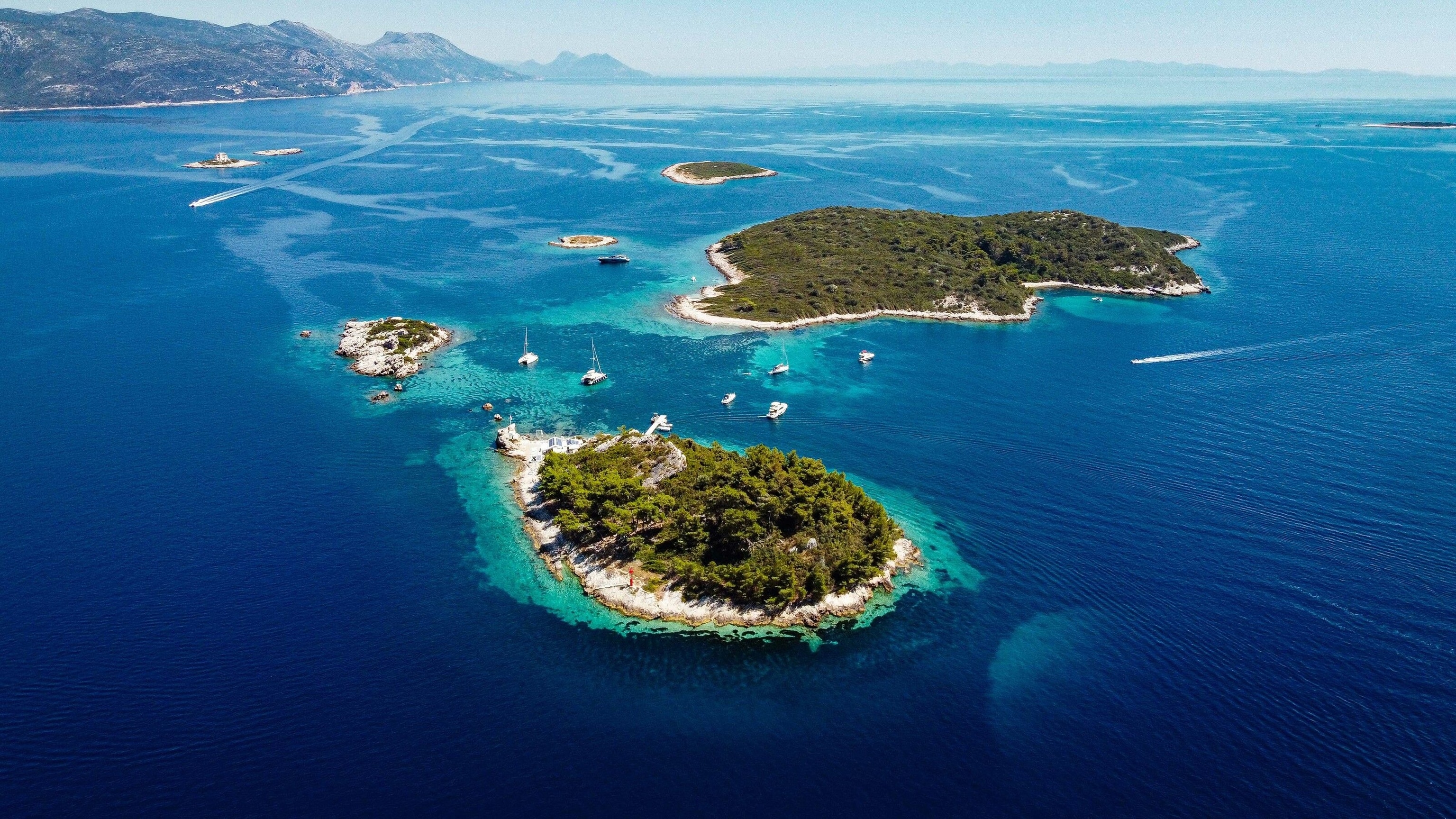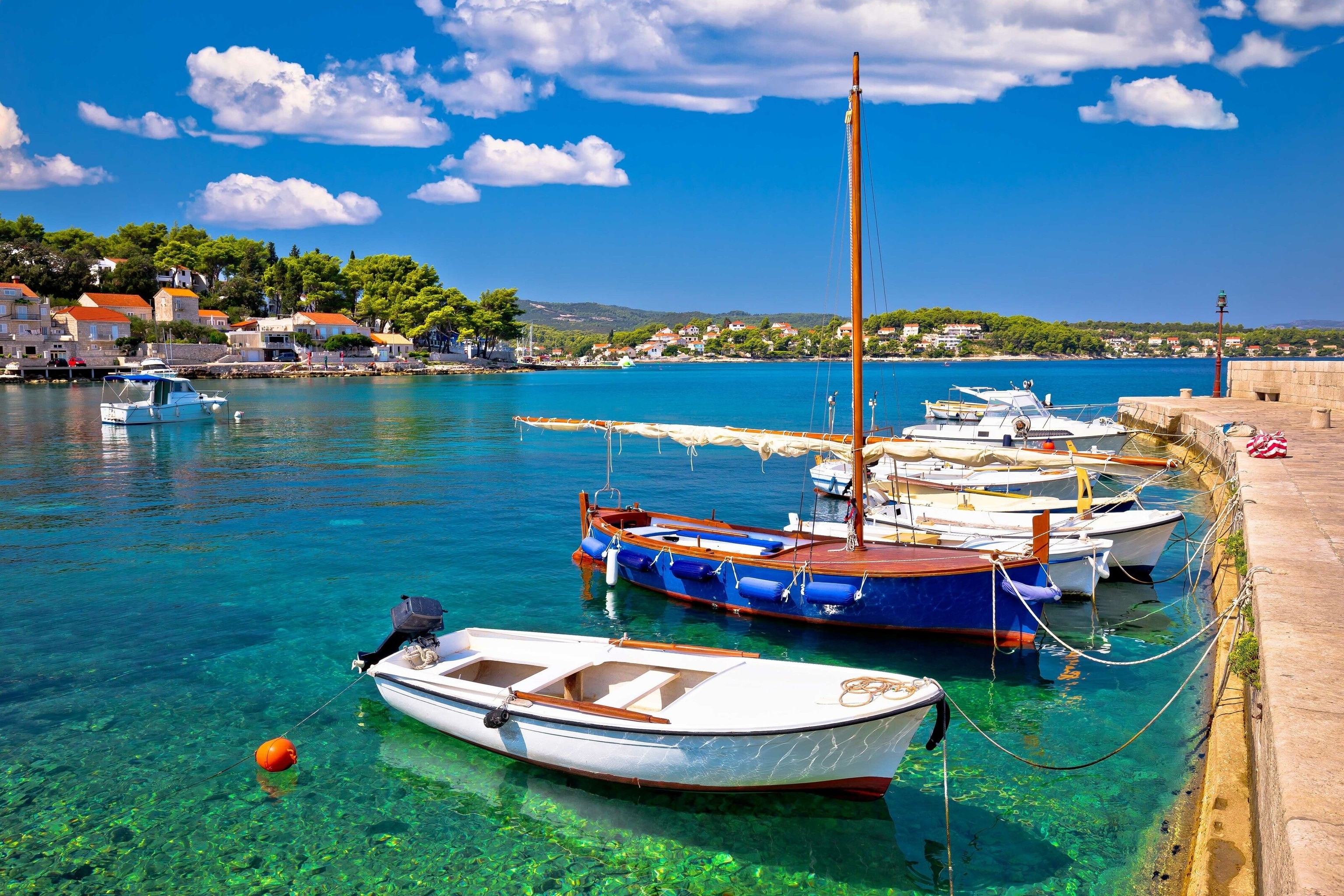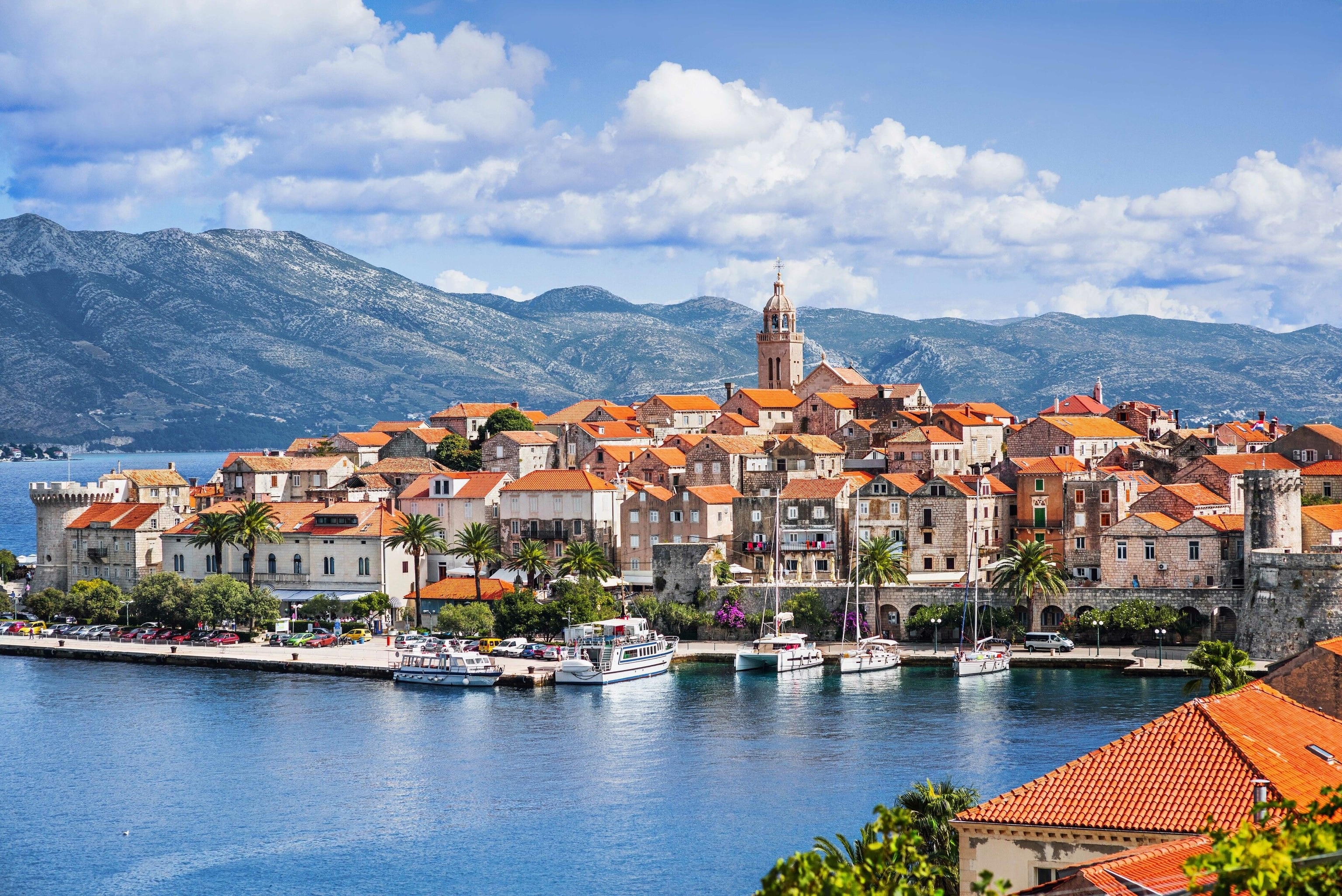
An inside guide to Korcula, Croatia’s paradise island
On the tiny island of Korčula, terracotta rooftops and cobbled streets meet sheltered coves and deserted forest trails.
Approached from the sea, Korčula Town looks much as it has done for centuries. A huddle of terracotta rooftops and a proud Gothic-Renaissance bell-tower rise from a tiny peninsular, protected by medieval fortifications, complete with sturdy towers. Closer inspections reveals stone alleys filled with open-air restaurants and cafes, candle-lit by night. Behind town, the island is a pastoral idyll of pinewoods, vineyards and olive groves, dotted with sleepy rural villages and little churches rimmed by cypresses. Along the rocky coast, you'll find sheltered coves where yachts drop anchor, and fine pebble beaches, where you might swim and snooze on summer afternoons.

Korčula spent several centuries under Venetian rule, when galleys sailing East would moor up in Korčula Town for repairs and supplies. A maze of cobbled alleys converge on the main square, where you can see the splendid 15th-century Cathedral, the loggia and noble residences with carved stone portals, all reminiscent of La Serinissima. Intrepid explorer Marco Polo (1254-1324) is said to have been born here and his supposed family home, the Marco Polo house (reopening this summer following restoration) stands behind the Cathedral. But for many visitors, the absolute highlight is attending an after-dark performance of the Moreška (ticket reservations essential), a spectacular medieval sword dance staged in Korčula Town on balmy summer evenings.
By day, white wine lovers might cycle into Korčula's fertile interior, to visit family-run wineries open for tasting. Head for Bire in Lumbarda to learn more about Grk, a grape often attributed to early Greek settlers from the 4th-century BC, or Toreta in Smokvica to sample Pošip, made from a grape indigenous to the island. En-route, you'll find several rustic agrotourism eateries serving authentic local fare – try Žrnovski makaruni (handmade pasta, unique to Korčula) accompanied by a hearty beef stew.
When it comes to swimming and sunbathing, many people rave about the small sandy beaches near Lumbarda – Vela Przina, giving onto the warm shallow sea, is especially popular with families with small kids. For something more secluded, head for the tiny scattered islets of the Korčula archipelago, served by taxi-boats from the palm-lined seafront promenade in Korčula Town. Couples love the trendy Moro beach on Vela Stupa, which has sun-beds and parasols for hire, a chic bar-restaurant, and a quirky double swing built over the sea.

From Korčula Town, regular shuttle-boats also run to Orebić on Pelješac peninsula (journey time 15 minutes), home to Trstenica pebble beach, complete with jet-skis, sea kayaks and SUPs (stand-up paddle boards). Much-loved by gourmets, Pelješac is famed for its fresh oysters and full-bodied ruby red wines. Summer 2022 will see the opening of the new two-kilometre-long Pelješac Bridge, connecting Brijesta on the peninsular to Komarna on the mainland, making Korčula all the more accessible too.
On Korčula's westerly tip, Vela Luka sits in a deep sheltered bay and is served by regular bus from Korčula Town (41km). Locals are currently working on the Luka Mosaic Path, which depicts scenes from the island's heritage and will eventually skirt 2.5km around Vela Luka bay. From here, a 15-minute uphill walk brings you to Vela Spila, an extraordinary light and airy cave, which was inhabited by homo sapiens some 20,000 years ago, according to recent archaeological excavations.
Vela Luka's hinterland produces some of Dalmatia's best organic olive oil – you can taste and buy direct at Jerolim on the seafront. Alternatively, sun-worshippers might catch a taxi-boat to the tiny uninhabited islet of Proizd (40 minutes), where rock-and-pebble beaches are clothing-optional and the sea is a gorgeous glistening translucent blue.
For more information, go to visitdubrovnik.hr
Follow National Geographic Traveller (UK) on social media




